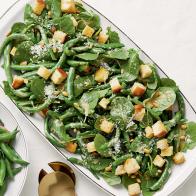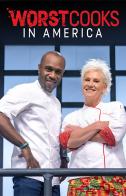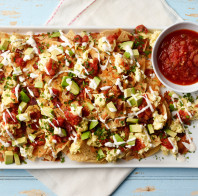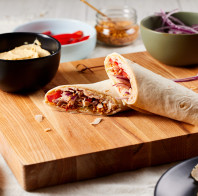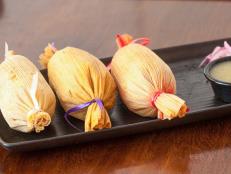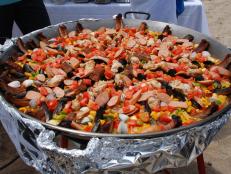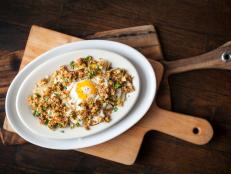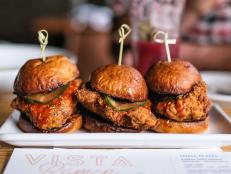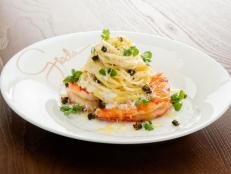The Best Sandwiches in America
Fancy roast beef, a croque, or perhaps a PB&J? Here are the country's most-iconic sandwiches, and the one place you should try each.

Related To:
Photo By: Goldbelly
Photo By: Staci J Perry
Photo By: Sarah Jane Sanders
Photo By: Katherine Rapin
Photo By: Deborah Jones
Photo By: Spencer Pernikoff
Photo By: Joseph Woodley
Photo By: Katherine Rapin
Photo By: Spencer Pernikoff at Whiskey & Soba
Photo By: Photograph: Jakob N. Layman
Photo By: BurkleHagen Photography
Photo By: Tudor’s Biscuit World
Photo By: William Wolfe
Photo By: Jakob Layman/@meetjakob
Photo By: Gabriele Stabile
Photo By: Justin Tsucalas
Photo By: Travel Marquette
Photo By: Erik Kellar
Photo By: Logan Crable
Photo By: Sarah Jane Sanders
Photo By: Jason Little
Photo By: Zack Bowen
Photo By: Noah Purdy
Photo By: Concept: Serafim Ferdeklis Owner
Photo By: Mike Gebert
Photo By: Jennifer Louie-Abernathy
Photo By: Elizabeth T. Jones
Photo By: Liz Clayman
Photo By: Kat Robinson
Photo By: Jim Klousia
The Best Thing Between Sliced Bread
A good sandwich is as American as apple pie, spawning dozens of regional interpretations and variations from New York City to Nebraska. Here are the 98 most-iconic sandwiches in the United States, and the perfect place to try each one.
Illustration by Hello Neighbor Designs
Muffuletta: Central Grocery (New Orleans)
Long ago, Italian immigrant Salvator Lupe watched his Sicilian farmer patrons struggle to eat their traditional platters of Italian salami, olive salad, cheese, Italian ham and bread on their laps outside his Central Grocery. He realized he could drastically improve their lives — or at least their lunches — by combining all of the above into an easily held meal. With a sprinkle of freshly minced garlic and a round loaf of sesame-sprinkled bread, the muffuletta was born. That quintessential NOLA sandwich is now found on nearly every restaurant menu in the city, but the proper place to experience its magic is at the place it was created, Central Grocery.
Hot Beef Sandwich: The Wheel Inn Cafe (Watertown, South Dakota)
This South Dakota specialty is the ultimate sandwich for lovers of meat-and-potatoes meals. The open-face dish combines mashed potatoes and hearty chunks of seasoned roast beef sandwiched between two slices of white bread, all smothered in homemade gravy that can look like it's frightfully close to running over the edge of the plate. The dish is available at diners and cafeterias throughout the state — often, unfortunately, with instant potatoes. One of the top hot-beef destinations for locals who want the real deal, made from scratch, is the Wheel Inn Cafe, which has been serving the savory treat for more than half a century.
Benedictine: La Peche Gourmet-To-Go (Louisville, Kentucky)
Sometime in the late 1800s Louisville native Jennie Benedict mashed together cream cheese, cucumber juice, onion juice and seasonings into a spread. That simple combination has gone on to become a mainstay during Derby week, when locals chow down on it as a dip or between slices of bread. But it’s a yearlong staple at La Peche Gourmet-To-Go, which is attached to Lilly's Bistro. There, acclaimed chef Kathy Cary makes a crunchy, cucumber-rich version that’s even better than the original recipe and is especially attractive sandwiched together with some crispy bacon and crunchy lettuce.
Roast Beef: Cutty’s (Brookline, Massachusetts)
Boston is a roast beef sandwich kind of town, especially around the North Shore, where roast beef joint upon roast beef joint churns out one exemplary specimen after another. Still, Cutty’s in Brookline serves one of the best in the U.S. — and possibly the world. Its Roast Beef 1,000 features all-natural Niman Ranch chuck, a beefier, juicier and higher-quality cut than most of the rounds other purveyors get. Over the course of about 36 hours, it's rubbed with a "secret salt" mix, left to cure overnight, slowly roasted and rested to room temperature. For each order, it’s sliced fresh and topped with fried shallots, Vermont sharp cheddar and horseradish-spiked Thousand Island dressing on a black-pepper brioche bun.
Pastrami on Rye: Katz's Deli (New York City)
In the late 1800s, when Eastern European immigrants were arriving en mass, pastrami made its way to New York City, working its way into the Big Apple’s — and America’s — essential culinary canon. Salt- and spice-cured beef is smoked and steamed until tender, then hand-sliced — the requirement at a proper deli — and sandwiched in lightly seeded rye bread slathered with spicy brown mayo. That’s exactly how you’ll find it at Katz’s Deli on Manhattan’s Lower East Side. Since 1888, locals have rushed the counters through seemingly disorganized crowds at the cash-only cafeteria-style joint, famously pictured in films like When Harry Met Sally, for its meaty, overstuffed hot pastrami sandwiches.
Cheesesteak: John’s Roast Pork (Philadelphia)
Philadelphia may be known as the birthplace of American democracy and the home city of Rocky, but the city’s biggest claim to fame is still a sandwich: the Philly cheesesteak. That hearty combo combines inly sliced and griddled beef, possibly onions, smothered with pick of Cheez Whiz, American or provolone in a crusty roll. Pat’s and Geno’s are the most-famous; however, when locals want to avoid the tourists, they head to John’s Roast Pork. The family-run sandwich stand has been a mainstay since the 1930s, hailed for its namesake roast pork and its cooked to-order cheesesteaks.
Croque Madame: Bouchon Bakery (Yountville, California)
The croque monsieur is the fancy French cousin to the American ham and cheese — an elevated combination of boiled ham between slices of sweet pain de mie, topped with grated cheese, baked, fried or grilled, then covered with decadent Bechamel sauce. Put an egg on top and it becomes a croque madame. Thomas Keller offers his own chef-y take on the latter at his renowned Bouchon Bakery in Napa. There, the internationally acclaimed chef accents thinly sliced Madrange Jambon de Paris with thick-sliced Brioche (baked on site of course), Swiss cheese and nutmeg-, clove-, pepper- and Comté-infused Mornay sauce, making the already indulgent dish even more extravagant. Take that, France.
Torta: La Torta Gorda (San Francisco)
The Mexican torta, a soft oblong roll filled with flavorful ingredients, has made it to the essential sandwich list in cities and towns around the United States. One of the buzziest versions is the Pierna Enchilada at San Francisco’s La Torta Gorda. Locals will forego their city’s infamous infant-sized burritos in favor of these Puebla-style specialties. Pork butt is marinated in freshly squeezed orange juice and simple spices, slowly simmered for four hours, then pulled into chewy chunks and coated with a smoky, sweet and fiery guajillo pepper-scented adobo salsa until it melts together. That juicy resulting pork is heightened with housemade refried beans, a thick slice of queso fresco, mayo, red onion and avocado on that requisite oblong roll.
Italian Sub: Bunk Sandwiches (Portland, Oregon)
Grinders, subs, hoagies and even the muffuletta: If an American city is home to Italians, it’s home to some version of an Italian sandwich. There are classics like Amato’s in Maine, Capriotti’s in Delaware or Ranelli’s in Birmingham. Each is good, with devout followers. However, newcomer Bunk Sandwiches in Portland has quickly surged to the spotlight. The Italian cured meats sandwich is a two-hander stuffed to the brim with ham, Olympia Provisions salami cotto and capicola, as well as marinated hot peppers and provolone picante.
Hot Salami: Gioia’s Deli (St. Louis)
This appropriately titled sandwich is hot in more ways than one. Gioia’s famous hot salami is served warm on Italian bread with Provel cheese and whatever garnishes are desired. And it’s been hailed as St. Louis’ favorite sandwich since 1918. House-made salame de testa is boiled from-scratch every day from a mix of beef and pig parts (that ends up more like a terrine or pate than your run-of-the-mill salami. The slightly earthy and peppery meat is sliced to order in thick rounds, served on hot Italian bread (get the garlic-cheese bread) dressed with choice of toppings like lettuce, tomato and spicy giardiniera.
Fluffernutter: American Fresh Brewhouse (Somerville, Massachusetts)
Marshmallow creme, the spreadable mix of marshmallow and corn syrup, wasn’t new when entrepreneur Archibald Query started selling "Marshmallow Fluff" to Somerville, Massachusetts, candy makers in 1917. But none of its predecessors had the same staying power as Query’s creation. By the 1960s, "Fluffernutter" sandwiches were being packed in lunchboxes across the United States. The combo of peanut butter and fluff on white bread is so popular there’s a National Fluffernutter Day (October 8) and the town of its birth still celebrates an annual Fluff Fest every fall. But those who can’t make it to the party can get an upscale version at American Fresh Brewhouse throughout the year. The combination of almond butter and fluff on toasted brioche makes for a decadent treat.
Beef on Weck: Charlie the Butcher (Williamsville, New York)
It sounds fancy and exotic, yet at its core the beef on weck is just a really good, really flavorful roast beef sandwich from Buffalo, New York. What sets it apart from other regional variations is the freshly grated horseradish sprinkled inside the special kummelweck (or kimmelweck) roll, similar to a kaiser but seasoned with fragrant caraway seeds and plenty of pretzel salt. Like all regional icons, this juicy, strongly spiced sandwich is found all throughout the city. Knowledgeable locals and visiting chefs prefer the version from Charlie the Butcher, where beef is slow-cooked for 18 hours, then sliced and dipped in bold au jus and sandwiched together with all the traditional trappings.
Salami and Cheese: Mudgie’s Deli & Wine Shop (Detroit)
Ham and cheese is one of the most-classic sandwich filling combinations in the United States. But many Italian-Americans like it hot, so they swap out mild ham for spicy salami. Greg Mudge, owner of Mudgie’s Deli & Wine Shop in Detroit, is one of those folks. His version, which he calls Leggo, is one of his personal favorites. It features hot Genoa salami, Asiago cheese, housemade olive tapenade, pepperoncini, pickled red onion, roasted tomatoes, romaine lettuce and mayo on a fresh-baked Italian hoagie made at nearby Golden Wheat Bakery.
Smoked Trout Salad Sandwich: Union Loafers Cafe (St. Louis)
One might think seafood is limited in states that don’t have direct access to the sea, but wherever there’s a river or a lake in the United States, there tends to be trout. That delicious freshwater fish can be found from Montana to Tennessee, served in all kinds of delicious forms. One of those mainstays is the trout salad sandwich. At Union Loafers Cafe in St. Louis, the sandwich-obsessed chefs smoke the fish over apple wood and mix the meat up with housemade mayo, lemon, capers and fennel. That bold, artisanal-leaning preparation is spread over freshly baked ciabatta bread, a naturally leavened local version crafted with Old World technique.
Chicken Biscuit: Biscuit Love (Nashville, Tennessee)
This perennially packed Nashville counter-serve spot is all about sharing the love — of biscuits. Chef-Owners Karl and Sarah Worley started Biscuit Love as a popular food truck before branching out into multiple brick-and-mortar locations spread throughout Music City. Guests can pick and choose from a wide selection of biscuit-hugged fare, from burgers and ham to French toast. But the East Nasty is really the one to get. This Nashville riff on the gravy-smothered Nasty Biscuit combines a fried boneless chicken thigh with aged cheddar and sausage gravy, all cradled within a flaky buttermilk biscuit.
Chicken Spiedies: Lupo’s S&S Char Pit (Binghamton, New York)
The immigrants who made their way from the boot to New York brought along their family recipes for spiedo, the Italian term for a spit. Back in the day, lamb was marinated, skewered and roasted on a spit until nice and crisp, then cradled in a bed of chewy Italian bread. But as is the case with most things that came to the United States, spiedo changed along the way. Lamb gave way to chicken, and Triple Cities residents who adored the dish Americanized its name to "spiedies." Get a taste at Lupo’s S&S Char Pit in Binghamton. There, the meat is marinated for 24 hours in a blend of oil, vinegar and a blend of secret Italian spices, then kissed by the flames of the grill and nestled in a 6-inch Italian-style roll from the original spiedie bread bakery, Felix Roma Bread.
Country Ham: Fulks Run Grocery (Fulks Run, Virginia)
Ham and cheese is a U.S. classic, but in the South, it’s all about salty country ham. This grocery store built in 1949 cures its pork the old-fashioned way, according to a family tradition that dates back well over a half century. Each ham is hand-rubbed with a special blend of salt, brown sugar and saltpeter, then hung to cure only during the winter months, when the natural temperatures are just right. At least five months later — probably longer — the flavorful meat is sliced from the bone, soaked in hot tap water, dredged in flour, fried until golden brown and piled high on a hearty bun. While the shop is open throughout the week, its famous fried ham sandwiches are served only on Fridays, generally from February to November. So, it’s best to call ahead before making the trip.
Turkey Sandwich: Cochon Butcher (New Orleans)
At a place whose name literally means "pig butcher," it’s easy to overlook a turkey sandwich. But at Donald Link’s Old World butcher and charcuterie shop, Cochon Butcher, that would be a mistake. It’s not just on the menu for folks who don’t eat pork. "With all the hearty sandwiches on the menu, we wanted to showcase a lighter, brighter sandwich but still have it carry a good depth of flavor," says Link. That flavor comes from smoking giant turkey breasts in-house and layering slices of them on locally made seed bread with avocado, tomato, and fresh local sprouts with a vibrant basil aioli.
Hot Chicken: Hattie B’s Hot Chicken (Nashville)
According to local lure, Nashville hot chicken was created by a scorned lover of a man named Thornton Prince to enact revenge on his prowling ways. Prince’s paramour spiced up his fried chicken with gut-churning amount of pepper until it reached a fiendishly dark red hue and hellishly hot flavor. Her retribution scheme didn’t go over as planned: turned out Prince loved the fiery fish and made it the highlight of Prince’s Hot Chicken Shack. The dish has spread like wildfire over the past few years, spreading from Louisville to Los Angeles. At Hattie B’s Hot Chicken, it can be found in sandwich form at multiple locations throughout its hometown.
Panini: Antico Noe (New York City)
Panini is the Italian word for "sandwich," and, like most Italian foods, it’s very simple and incredibly delicious. When done properly (i.e., the Italian way), each sandwich includes a very particular ratio of ingredients on super-fresh bread. That’s what you’ll find at Florentine import Antico Noe in New York City. The second outpost of a 70-year-old Florence panini shop with an enthusiastic cult following, it serves panini that are about as close as one could get to the motherland without a long-haul flight. About 90% of the ingredients are sourced from Italy, and the owners spent ample time replicating the bread recipe to ensure it's exactly the same. Because of a salt tax in Florence hundreds of years ago, that recipe doesn't include salt, but that’s what makes the bread's perfectly crunchy exterior an ideal counterbalance to all of the wonderfully salty meats.
Tuna Salad: BKLYN Larder (Brooklyn)
For the past 50 years, cans of tuna have graced nearly every pantry in the United States. Because of that, a lot of Americans turn to the tuna salad sandwich when the fridge runs down to its bare bone essentials. At BKLYN Larder, however, the tuna, egg and anchovy sandwich is a dish worth celebrating. It starts with a Grandaisy Bakery flauta baguette that’s sliced down the middle and smeared with mayonnaise on one side, drizzled with olive oil on the other. Brooklyn’s best tuna salad is then topped with briny bursts of capers, a sliced, hard-boiled egg and two whole Agostino Recca anchovies laid across the whole thing with a quick squeeze of lemon for an innovative carb-loaded riff on a Nicoise salad.
Chopped Liver: Kenny & Zuke’s (Portland, Oregon)
Having to ask, "What am I, chopped liver?" is generally not considered a good thing. Traditionally, chopped liver was served as a side dish, not a main course, so the phrase is associated with feeling overlooked. But that delicious Jewish-style pate is a star in the eyes of many sandwich lovers. The filling, a mix of cooked, trimmed liver, hand-chopped with onions in a sort of rough pate, is incredibly flavorful, and many consider it a delicacy. It’s even better layered with house-smoked pastrami, coleslaw and Russian dressing at Kenny & Zuke’s. Known as Ken’s Special, this amped-up chopped liver sandwich comes on fresh rye bread made from scratch daily at the new-school Portland deli.
Roast Pork: Paesano’s (Philadelphia)
Philly may best known for its namesake cheesesteak, but many residents actually prefer the city’s other meaty signature sandwich: roast pork. Stuffed to the gills with roast pork, broccoli rabe, sharp provolone and long hots, this local creation may, in fact, be even more flavorful than the steak-and-Whiz mix. At Paesano’s, cheese and garlicky greens accented with hot peppers ooze into a greasy, mouthwatering mess of slow-roasted pulled pork on a seeded roll in what they call The Arista. Be prepared to wash your hands or go through some napkins after eating this juicy beast of a meal; it’s sure to make a mark on those who eat it.
Cevapi: Balkan Treat Box (St. Louis)
Across the Balkans, chefs and home cooks combine minced meat and garlic into thin, finger-shaped kebabs and grill them over an open flame. This sausage-like specialty can be found plain without any accoutrements, but more often than not it’s served in pillowy flatbread with flavorful condiments. That’s what you’ll find at St. Louis Bosnian food specialist Balkan Treat Box. The former food truck, now a brick-and-mortar restaurant, serves longer, denser Sarajevo-style cevapi in its homemade wood-fired pita (called somun) with raw onion and kajmak, a creamy white sauce that somewhat resembles clotted cream.
Peanut Butter and Jelly: PBJ LA (Los Angeles)
Ah, the PB&J: It’s the lunchtime staple of American childhood. Who would have ever thought that the simple all-American snack could (or even should) move beyond the basics? The folks at PBJ LA took the classic to soaring new levels with an entire menu of plant-based organic, from-scratch nut butter-and-jelly sandwiches. The Red Eye, one of the most-popular picks, is a buzzy riff on the traditional with espresso peanut butter infused Jaguar Forest Organic Coffee, spread onto bread along with dark chocolate raspberry jam. There are also peanut-free versions, such as the cocktail-inspired Old Fashioned with salted pecan butter and apple jam with Angostura Bitters and orange zest.
Club Sandwich: Gadwall’s Grill (North Little Rock, Arkansas)
The club sandwich was first served in gentlemen’s clubs back in the late 1800s. The two-layer sandwich filled with chicken or turkey, bacon, lettuce and tomato layered between three slices of mayo-coated toast held together with a toothpick is elegant enough to be considered a knife-and-fork dish by some in the private-club set. The version at Gadwall’s Grill is wholly satisfying and anything but stuffy. Three slices of bread are brushed with melted butter and tossed on the flattop. So is a slice of deli turkey, which is grilled with a slice of Swiss cheese. Same with deli ham and American cheese. Once both pieces of cheese start to melt and the bread is nicely toasted, it’s all stacked together with lettuce, pickle and mayo, cut into triangles and held together with frilly toothpicks.
Grilled Chicken: JJ’s Deli (Scottsdale, Arizona)
This warm and inviting neighborhood deli is the place to go for breakfast and lunch standards in Scottsdale. Locals chat together and fill up on omelets, hot dogs, cold sandwiches and traditional Jewish fare like knishes and pastrami sandwiches. But this is the Southwest, so JJ’s Deli’s menu caters to chili-obsessed Arizonans. Its Santa Fe Grilled Chicken Sandwich is one to actually get excited about. Combining juicy grilled chicken, Swiss cheese, avocado and a piquant portion of green chili stacked between two slices of grilled sourdough bread coated with a bit more heat in the form of homemade chipotle mayonnaise, this sandwich is something locals crave — and not just because they’re trying to cut calories.
Pulled Chicken With White Sauce: Big Bob Gibson (Decatur, Alabama)
When most barbecue aficionados think of Alabama, they tend to conjure images of its barbecue chicken with white sauce. Invented at Big Bob Gibson in 1925, the North Alabama specialty features locally sourced birds, slowly cooked until tender and juicy in a hickory-fired brick pit, drizzled with the iconic tangy brew of mayo, vinegar and spice. The pairing is so good that it has since spread to neighboring restaurants in the area and has morphed into sandwich form. Those who want some bread to soak up the flavorful sauce — and don’t want to deal with bones — would be wise to try the pulled chicken with white sauce here at its birthplace. One bite and you’ll see why it’s been duplicated so many times.
Liverwurst: Werner’s Fine Sausages (Mission, Kansas)
When Germans crossed the pond to the United States, they brought their favorite dishes from home, many of which have since been adopted as part of the American culinary canon. The liverwurst sandwich is one such staple. Raw, uncut livers are run through a meat grinder until creamy like peanut butter, stuffed into a casing, cooked and sandwiched between two slices of bread. Werner’s Fine Sausages in Mission, Kansas, makes its Old World-style liverwurst by hand in small batches. They cook pork and onions, add the liver and mix it with spices, stuff it into casings and sous vide the whole thing. It’s sandwiched between slices of seedless rye with mayo, onions and lettuce.
Polish Boy: Banter Cleveland (Cleveland)
Back in the 1940s, when smoky Polish-style sausages were called "Polish boys," barbecue aficionado Virgil Whitmore decided to make a sandwich with some ingredients he already had on hand. Atop one of those "Polish boys," Virgil stacked crisp fries, creamy coleslaw and tangy barbecue sauce, and sandwiched his creation in a sturdy hot dog bun. The somewhat happy accident took off and worked its way into the Cleveland barbecue canon, where it has remained for well over a half century. Try one of the new cheffy takes at sausage and poutine shop Banter, where butcher-made kielbasa and impeccable fries make for one heck of a satisfying hand-held meal.
Porchetta: Porchetta Republic (Los Angeles)
Porchetta is one of the most-famous street foods in Italy. Walk around Rome and it’s not hard to find someone serving juicy whole pig that's been deboned, roasted on a spit and stuffed inside delicious bread. The dish used to be a rarity in the States, but it’s not anymore — lovers of swine can now find it in most big U.S. cities. Sample it at specialists like Porchetta Republic in Los Angeles. The shop's porchetta piadina features crispy skin and lots of juice offset by fresh baby arugula, shaved Parmesan and just a hint of extra-virgin olive oil on scratch-made piadina, a popular Italian flatbread. The owners use their grandma’s bread recipe of just flour, water, salt and lard.
Sloppy Joe: The Southern General (John’s Island, South Carolina)
A good sloppy joe requires plenty of napkins. The iconic American sandwich features a loose mix of simmered beef in a pasty Worcestershire-spiked ketchup sauce that drips out the sides of the bun — and all down your arms — when you take a bite. It’s not exactly the kind of thing you want to eat in public, but it’s worth looking like a mess at The Southern General. The John's Island sandwich shop makes a Lowcountry Southern Joe that features a bold mix of spicy pork and ground beef cooked in a red Creole sauce. It's served with pimento cheese and green tomato chow-chow on grilled local honey white bread.
Bocadillo: Despaña (New York)
A typical Spanish bocadillo is a simple affair. (The word translates as "snack," which is what it's considered, not a full meal.) Crusty Spanish bread is moistened with a sliced tomato and topped with a thin layer of fillings like jamon iberico, Manchego cheese and chorizo. Despana in NYC offers a wide selection of bocadillo fillings — including vegan and vegetarian options — but the traditional chorizo is its top seller. U.S. pork is combined with pimenton de la vera (sourced from Spain) in a natural skin casing, cut into slices and grilled, then layered with sliced Manchego cheese and drizzle of Spanish extra-virgin olive oil on a rustic baguette. The flavorful mix is pressed in a sandwich grill to melt the cheese and toast the bread.
Mountaineer Biscuit: Tudor’s Biscuit World (Charleston, West Virginia)
In West Virginia, biscuits are serious business — and biscuit sandwiches are pretty much a mandatory dish. Tudor’s Biscuit World consistently ranks as one of the best purveyors of the buttery pastry in the state and, according to some, the best thing about the Mountain State. Suffice it to say, the state’s namesake Mountaineer Biscuit has reached icon status in the Appalachian region. It's made with country ham, a crispy potato cake, egg and cheese, all cradled inside a flaky bun.
Pot Roast Melt: Cathedral Cafe & Bookstore (Fayetteville, West Virginia)
Slow-cooked pot roast is a good ol’ American classic that gets an even more Americana upgrade in the form of a pot roast melt sandwich. You can find it on Denny’s lunch and dinner menu, but one of the homiest restaurant versions is served at Cathedral Cafe & Bookstore near Fayetteville, West Virginia’s New River Gorge. The former church-turned-restaurant-and-bookshop combines shredded chuck roast, cheddar cheese, tomato, red onion and spicy horseradish mayo on grilled sourdough that’s so good you’ll almost want to pack up and move to the Mountain State.
Caprese: Caputo’s Market (Salt Lake City)
This Salt Lake City market is acclaimed for its wide-ranging selection of cheeses, so the slices stuffed into their deli sandwiches are leaps and bounds above those at most delis. On the cheese-centric Caprese — theirs is called the Fior di Latte — the quality is particularly noticeable. High-quality (and expensive) cow’s milk fior di latte fresh mozzarella from St. Albans Creamery in Vermont is simply stacked with tomato, lettuce and fresh basil, with a solid drizzle of IGP-protected balsamic vinegar and real-deal olive oil bursting with the aromas of stone fruit, on a crusty white bread from local Stone Ground Bakery. "Our Fior di Latte is simply a classic rendition of a Caprese salad on bread," says owner Matt Caputo. "All the right ingredients and nothing extra."
Ahi Tuna Sandwich: Kaka’ako Kitchen (Honolulu)
When canned tuna was introduced in the early 20th century, tuna salad sandwiches took off like a hound on a scent. Seared tuna sandwiches came into popularity more recently, with a wide array of international influences highlighting super-fresh slabs of ruby-red fish. One of the freshest and most creative takes in the U.S. can be found at Kaka’ako Kitchen. Chef Russell Siu serves a lightly seared ahi tuna steak with sweet teriyaki sauce, tobiko (flying fish roe) aioli, lettuce, tomato and fried onions on a purple taro bun at his bustling Honolulu counter-serve place. It's a wonderfully flavorful meal to eat on the outdoor patio while enjoying the ocean breeze.
Whitefish Salad: Zingerman's Delicatessen (Ann Arbor, Michigan)
Randy Hampton, a dropout Ph.D. candidate in chemistry who came to work in Zingerman’s Deli's kitchen, inspired this whitefish salad sandwich. The former aspiring comedian, now a successful Ph.D. chemist who runs a lab at the University of California, San Diego, is the Randy in Randy’s Routine. Smoked whitefish from Mackinac Straits Fish Co. is hand-picked off the bone and mixed with rich sour cream, mayonnaise, onions and fresh dill, then layered with scallion cream cheese and tomato on pumpernickel bread from Zingerman's Bakehouse. It was one of the first sandwiches on the university town deli’s menu — and it’s still a top seller.
Chicken Milanese Sandwich: Alimento (Los Angeles)
As with many things food-related, the Italians have their own delicious version of a fried chicken sandwich. Milanese is a style of preparation that features floured and breaded meat (the term doesn't just apply to chicken) fried in oil until golden brown. Alimento in Silver Lake has developed a cult following for its version. For brunch, Chef Zack Pollack serves his breaded chicken thigh in the style of a Milanese cutlet, nestled in a light brioche bun toasted with olive oil and topped with thinly sliced prosciutto cotto along with pickles, fresh pepperoncini slaw and a bit of Calabrian chile mayo for some heat.
Rib Sandwich: Saddleback BBQ (Lansing, Michigan)
"This pound-and-a-half sandwich puts the McRib to McShame," says Drew Piotrowski of Saddleback BBQ. This hulk of a hand-held meal starts with the smoker. The crew at Saddleback cook their baby back ribs for four to six hours in a blend of Michigan hardwoods (white oak, cherry, apple and a touch of hickory). When it's all nice and tender, they debone half racks, place each one on a bun and add housemade pickles and onions with a coating of sweet and savory barbecue sauce.
Pork Belly Bao: Momofuku Noodle Bar (New York)
Celebrity chef David Chang is known for many things, but he readily admits he would not be where he is today if it weren’t for his pork buns. For the past 15 years, his constantly packed Momofuku Noodle Bar has been serving the simple yet extremely flavorful steamed buns, spawning countless imitators across the globe. The bao, featuring just-roasted pork belly with quick-cured cucumbers, scallion and hoisin on a fluffy and spongy bao bun, hits all kinds of flavor notes and textures. It’s rich and fresh, sweet and savory, light and meaty, all at the same time — and this ever-popular dish has kick-started an international bao movement.
Sabich: Taim Falafel (New York)
When Iraqi Jews migrated to Israel, they introduced sabich. Originally served for Shabbat breakfast, the dish features a pita or flatbread that's stuffed with fried eggplant, hummus, salads and egg, and then topped with tahini and amba, a tangy condiment made from pickled mango. It combines a tantalizing blend of flavors and textures — and it’s moved from being a home-cooked staple to a fast-food favorite in the Holy Land. Taim chef-owner Einat Admony has made it a hit in New York City. Her version follows the traditional recipe with buttery rounds of thick eggplant, sliced hard-boiled egg, Israeli salad with lemon mint dressing, marinated cabbage and the obligatory sauces, all adding up to a creamy, crunchy and addictive experience.
Tongue Sandwich: Shapiro’s Delicatessen (Indianapolis)
For the uninitiated, a tongue sandwich may sound like some sort of joke. In its natural, uncooked state, the main ingredient, actual beef tongue, resembles an oversized human tongue. But this traditional Eastern European deli delicacy is juicy, tender and meaty when it’s cleaned of its fibrous membrane (i.e., taste buds). At iconic Indianapolis Jewish deli Shapiro’s, beef tongue is smoked in the traditional way from a decades-old family recipe, sliced thin and piled high on pumpernickel bread with spicy brown mustard. It tastes and looks way more appetizing than it may sound.
Crab Cake Sandwich: Crabtowne USA (Glen Burnie, Maryland)
In the Chesapeake Bay area, crab cakes are served in every possible form: appetizers, dinners, salads, tacos, you name it. So, of course, the crab cake sandwich is a mainstay at crab shacks throughout the region. At this old-school seafood house in Glen Burnie, Maryland (just outside Baltimore), a huge, meaty crab cake squishes out the side of the kaiser roll as guests try to sink their teeth into the giant thing. Crabtowne USA’s flavorful rounds of local crab, accented with lettuce, tomato and homemade tartar sauce, fill the buzzing dining room as locals wash 'em down with crab-topped Bloody Marys.
Fried Peanut Butter and Banana: The Arcade (Memphis)
Some people think that Elvis Presley was the only one obsessed with fried peanut butter-and-banana sandwiches, but that sweet and creamy combination is actually a regional specialty across the Mississippi Delta. One of the best versions in the area is served at The Arcade in the King’s home base of Memphis, Tennessee. There, thick Texas toast is smothered with peanut butter and about half a sliced-up banana. The cooks add a good amount of butter to the griddle and fry up the sandwich until the edges of the bread's crust begin to brown. While they do serve a simple vegetarian version, many guests choose to add bacon to make the dish even more flavorful and filling.
Cudighi: Vango’s (Marquette, Michigan)
Like a lot of foods that have become regional staples, this savory sandwich was imported from overseas. It came over to Michigan’s Upper Peninsula and found a home in the Marquette area with immigrants from Northern Italy. Named after the homemade spicy Italian sausage that’s often seasoned with warming clove and cinnamon, the cudighi showcases the flavorful meat with just marinara sauce and mozzarella cheese on a hard roll. It’s found at most sub, pizza and pasty shops throughout the area, but the heavily spiced version at Vango’s is known to be exemplary.
The Vermonter: Jericho Country Store (Jericho, Vermont)
Vermont, home to some of the most-beloved ice cream in the U.S. — yes, Ben & Jerry’s — also has its own sandwich. The Vermonter features either turkey or ham, layered with local sharp cheddar (of course), slices of crisp green apples and honey mustard. It’s available all over the state, but the Vermonter Panini at Jericho Country Store is worthy of its own trip. It features Boar’s Head sweet ham, Cabot cheddar, slices of Granny Smith, red onion, tomato and honey mustard squished between two slices of sourdough bread. Once it’s assembled, the crew here toast it in the panini grill, making it hit all the flavor notes and textures.
Kalua Pig: Highway Inn (Honolulu)
Kalua Pig is an age-old Hawaii specialty featuring meat cooked in an underground pit (known as an imu) with layers of wood, volcanic rock, banana trees and ti leaves, which imbue it with a soft earthy flavor. After steaming for six to 12 hours, the pork comes out tender and smoky — the perfect filling for a decadent sandwich. Versions can be found throughout the state, but the kalua pork sliders at Highway Inn are superb. Pork is prepared and hand-shredded according to a 70-year-old family recipe, nestled with bell peppers, onions and a hot Hawaiian chile aioli on a taro roll and served with colorful taro chips and salsa on the side.
Duck Confit: Duckfat (Portland, Maine)
One would be hard-pressed to find a more indulgent sandwich filling than duck confit. Confit is a classic French preservation method in which succulent duck is cooked and cured in its own rendered fat. The meat ends up full of savory flavor, with a texture so moist and tender it really does practically melt in the mouth. Duck confit sandwiches can be found on gastropub menus across the U.S., but it would make sense that a place called Duckfat would have some of the best fat-cured duck around. Its overnight duck confit panini combines rich poultry with chewy bread baked daily by nearby Sorella’s Bakehouse. The current iteration features charred cabbage, cilantro and black garlic mayo, but the place offers special variations at times, like the version with house-smoked brisket and Chinese broccoli.
Katsu Sando: Stonemill Matcha (San Francisco)
Japan’s crispy answer to a schnitzel sandwich, the katsu sando has been increasingly turning up on restaurant menus around the United States — as well as on so many Instagram feeds it's nearly impossible to miss. The simple and craveable sandwich features crunchy and juicy pork cutlets sandwiched between slices of pillowy Japanese milk bread. Sink your teeth into the heavenly version at Stonemill Matcha. San Francisco's constantly packed Japanese cafe combines tender breaded fried pork with sweet and savory tonkatsu sauce and refreshing cabbage slaw on soft white bread.
Croissant Breakfast Sandwich: Nathaniel Reid Bakery (Kirkwood, Missouri)
If every major fast-food chain has a version, you know it's a classic American dish. That’s certainly the case with the croissant breakfast sandwich — at least at chains that serve the first meal of the day. Forgo the drive-through version in favor of a chef-prepared take such as the breakfast sandwich at Nathaniel Reid Bakery in Kirkwood, Missouri. It's been hailed as one of the best breakfast sandwiches in the food-loving St. Louis area. Reid layers farm-fresh soft-scrambled eggs (which have an airy, quiche-like consistency) with ham, smoked bacon and Havarti inside one of the bakery’s renowned croissants that take four whole days to make. Melted cheese and chives add another creamy and vibrant touch.
Cuban: Columbia Restaurant (Tampa, Florida)
The Cuban sandwich is a misnomer on many levels — neither the sandwich itself nor its culturally diverse fillings originated in Cuba. It’s like an ode to the cultural fabric that made up its home city when it was created in 1915. Invented at Tampa’s Columbia Restaurant, the oldest dining establishment in the state, the iconic sandwich was actually called a mixto when it was first created. It combines Genoa salami from Italy, Spanish ham, Cuban-style mojo-marinated pork, Swiss cheese, German pickles and mustard, nestled in fluffy Cuban bread. The bread still comes from century-old La Segunda Central Bakery, which has been the supplier since shortly after the sandwich was invented.
Barbecue Brisket: Loro (Austin, Texas)
While the word barbecue means pork in the Carolinas, in Texas’ Hill Country, the term is synonymous with beef brisket. Aaron Franklin of Franklin Barbecue is consistently hailed as the leader of the pack. The no-reservations, counter-order barbecue joint has notoriously long lines — President Obama was the only person ever offered a reprieve — but the James Beard Award winner’s brisket can also be found at his new Asian-inspired smokehouse, Loro. Co-owned with Chef Tyson Cole of Uchi and Uchiko fame, Loro offers guests a chance to sink their teeth into Franklin’s smoked and grilled brisket sandwich, marinated in nuoc mam and finished with herbs and chile oil, sandwiches with zesty papaya salad, peanuts, chile aioli and thai herbs — hopefully with a slightly less onerous wait time.
Corned Beef: Canter’s Deli (Los Angeles)
Few dishes showcase the melting pot of American cuisine better than corned beef. Created by wealthy Irishmen, commoditized by the British, adopted by North American colonists and perfected by Jewish immigrants in New York City, brined and boiled brisket has become both a St. Paddy’s Day and Jewish deli staple around the United States. Served hot on fresh baked rye bread with a pickle, Canter’s in Los Angeles is one of the best places to try it. Open 24 hours a day, aside from Jewish holidays, the landmark deli has long been a magnet for celebs at all hours of the day and night, luring Marilyn Monroe and Arthur Miller, Prince, Stevie Wonder and Guns N’ Roses to its vinyl-covered booths.
Fried Bologna: Turkey and Wolf (New Orleans)
Kids all across America grow up eating bologna sandwiches. Young Southerners, however, up the ante with fried bologna. From the Great Smoky Mountains to the Mississippi Delta, rounds of cured pork (derived from Bolognese mortadella) are fried to a crisp, sandwiched between slices of white bread and flavored with various condiments, including near-mandatory mayo. At New Orleans’ Turkey and the Wolf, Mason Hereford griddle-fries three slices of locally made bologna, coats it with American cheese and accents it with house-made hot mustard, Duke’s mayo and shredded lettuce. That would be great on its own, but what really sets this monster of a sandwich apart is the crown of vinegar-brined potato chips sandwiched between butter-slathered thick-cut slices of Pullman bread.
Reuben: Crescent Moon Alehouse (Omaha, Nebraska)
Of course a sandwich as celebrated — and ubiquitous — as the Reuben has some legends surrounding its original story. One of the more credible fables claims it came to be when Reuben Kulakofsky suggested the combo during a poker game in Omaha’s now defunct Blackstone Hotel. It’s said that hotel owner Charles Schimmel first made the sandwich and liked it so much he added it to the menu. That same recipe of tender corned beef, melted Emmental cheese and sauerkraut slathered with Russian dressing, pressed between slices of grilled marbled rye can now be sampled right across the street from the old hotel at Crescent Moon Alehouse, the city’s best Reuben according to many locals.
Tri-Tip: Firestone Grill (San Luis Obispo, California)
Although most barbecue fanatics tend to concentrate on the south, California’s Central Coast is also a hotspot for smoke-kissed meat. Inspired by the area’s deep rancho roots, grill-masters have long finessed tri-tip, a lesser-known cut from the top of the sirloin. Throughout the region these Santa Maria steaks are grilled to medium-rare, then stuffed inside a French roll. You’ll find an excellent representation at San Luis Obispo’s Firestone Grill, where thin slices of oak-scented tri-tip are simply served with house-made barbecue sauce on a French roll.
The Original Maid-Rite Sandwich: Maid-Rite (Muscatine, Iowa)
An Iowa tradition since 1926, chowing down on a Maid-Rite sandwich is a requirement for sandwich-loving Hawkeyes. The messy ground-meat sandwich — with Midwestern beef topped with mustard, ketchup, onion and pickles on a fresh-steamed bun — was first invented by butcher Fred Angell in Muscatine, Iowa. A customer, a local delivery man, was pleasantly surprised by that combination of tangy spices and savory meat, declaring the combination to be "made right." And the sandwich got its name. Shortly after its inception, Angell began franchising the concept, spreading the gospel of the Maid-Rite sandwich across the state and throughout the entire Midwest.
Hot Brown: Brown Hotel (Louisville, Kentucky)
This creamy, open-faced turkey sandwich was created to recharge the batteries of dinner-dance patrons when Chef Fred Schmidt introduced it to the Brown Hotel’s menu back in 1926. Schmidt piled sliced turkey atop a piece of toast, covered it with Mornay sauce, adorned it with Roma tomato halves and toast points, passed the lot under a hot broiler and added crisp bacon slices. Now a Kentucky sensation, the Hot Brown has spawned numerous best-of competitions. Try one where it was created.
Jibarito: The Jibarito Stop (Chicago)
The jibarito — a sandwich of meat, lettuce, tomato, onion and cheese, cradled between two slices of fried, salted green plantains — has engendered some serious controversy. One side claims it was invented by Chicago restaurateur Juan Figueroa at now-closed Borinquen. Others say it was created in rural Puerto Rico. Wherever its inception, one thing is certain: The sandwich has become a Windy City obsession. Nearly every Puerto Rican joint in the city serves a rendition. The popular sandwiches are the name of the game at The Jibarito Stop in Pilsen, where you’ll find a banner version with cheese, meat, lettuce, tomato and onion between salted green fried plantains.
Ham and Cheese: Feast! (Charlottesville, Virginia)
It’s hard to find a ham and cheese that’s better than the one you make at home ... unless you head to Feast! in Charlottesville, Virginia. The local-centric market and deli offers an impeccable rosemary ham and goat cheese sandwich that celebrates the flavors of the city and nearby Shenandoah Valley. The creamy and tangy chevre is handcrafted in small batches down the road at Caromont Farm. It’s counterbalanced with a sweet and spicy plum chutney from Virginia Chutney Company and peppery arugula from Manakintowne Farm, all layered together on fresh focaccia bread made by Albemarle Baking Company, then warmed on the grill. For those who want to eat more than one, all of the ingredients can be purchased at the neighboring specialty store, so you can up your at-home ham and cheese game, as well.
Maryland Pit Beef: Chap’s Pit Beef (Aberdeen, Maryland)
The opposite of Kansas City, Texas and the Carolinas low-and-slow philosophy, Maryland’s regional barbecue cooks hard and fast. Lean-top roast beef is minimally seasoned before it’s tossed onto a grill directly over hot charcoal. When it’s somewhere between raw and medium-rare, the whole thing is sliced into thin pink silvers, which are piled into a roll. At Chap’s Pit Beef in Aberdeen and Baltimore, those shreds of tender meat are enlivened with onions and the signature Tiger Sauce, a spicy blend of mayonnaise and horseradish.
Falafel Pita: Al-Ameer Restaurant (Dearborn, Michigan)
The greatest vegetarian dish between any type of bread, these fried balls of ground chickpeas and fava beans have been hugged by fluffy pita possibly further back than a millennia. The wrap spread to the United States by way of the Middle East sometime in the 20th century, making its way into restaurants and delis all across the country. The city best-known for its impeccable presentations of Middle Eastern fare is Dearborn, Michigan, just outside Detroit. For the past three decades, Al-Ameer has been hailed as the best restaurant in town, serving the best Lebanese-style falafel in the U.S. These fluffy-on-the-inside-crisp-on-the-outside rounds are topped with housemade tahini, parsley and tomatoes on fresh-baked pita.
Grilled Cheese: Melt Shop (New York City)
Making a good grilled cheese is actually harder than it seems. Every home cook has experienced the blackened bread or not-fully-melted cheese problem. Those sad attributes are never an issue at Melt Shop, arguably the place that reinvented the grilled cheese. Whimsical sandwiches span from pepper Jack-coated Buffalo chicken to savory French onion steak. Purists appreciate the simple Maple Bacon. A superior version of the homemade bacon-topped version, Melt Shop’s take combines sweet maple-glazed bacon with New York cheddar and sharp brick spread, perfectly gooey on properly browned country white bread.
Lobster Roll: Eventide Oyster Co. (Portland, Maine)
There are a lot of great things to see and do in Maine: stunning oceanside cliffs, verdant forests, antique wooden ships sailing through fog-covered harbors. Even so, the first thing most visitor want to experience upon arrival to the Pine Tree State is a lobster roll in the place where lobster’s best. The signature Eventide Brown Butter Lobster Roll is regarded as the top pick of many a top chef. This warm sandwich combines straight-out-of-the-water Maine lobster meat with a nutty, salted brown-butter vinaigrette stuffed atop a bao-style steamed bun. This creative update is certainly rich, but the hint of lemon in the buttery dressing cuts through the potential heaviness, brightening the flavor of the perfectly cooked shellfish.
Bacon, Egg and Cheese: BEC (New York City)
New York City may be best-known to out-of-towners for its dollar slices and dirty water dogs. However, one of the most popular locally beloved staples is the bacon, egg and cheese on a roll. It’s not an exaggeration to say that there are hundreds, if not thousands, of excellent BEC found at bodegas and delis throughout the city, whipped up in under a minute. For a grand take on the morning mainstay, head to the fittingly labeled BEC. The Chelsea fast-casual joint offers made-to-order organic egg sandwiches accented with locally sourced meat and dairy. The BEC Classic combines two over-easy eggs with applewood-smoked bacon and New York sharp cheddar on a bacon- and cheese-crusted brioche bun.
Chicken Parm: Parm (New York City)
It shouldn’t be hard to guess the specialty at this New York City Italian-American joint. Choose from chicken, eggplant or meatball parm offered on rolls, in heroes or as platters, along with a handful of other red sauce classics. The chicken parm is consistently hailed as the best in the United States. There are no over-the-top tricks or accoutrements, just high-quality, extremely fresh ingredients expertly assembled. Soft semolina bread sourced from nearby Parisi Bakery is layered with slowly simmered tomato sauce, freshly fried chicken cutlets, another drizzle of tomato sauce and fresh mozzarella. The whole thing is toasted until the cheese is melted, then it’s finished with a few basil leaves and bundled together.
Sloppy Joe: Town Hall Deli (South Orange, New Jersey)
Not your average cafeteria-style ground beef in tomato sauce, this New Jersey sandwich is a far cry from what many Americans think of when they think sloppy Joe. This far less messy meal was actually inspired by a dish found in Havana, Cuba, at — surprise, surprise — a bar called Sloppy Joe’s. Reborn at Town Hall Deli in South Orange, back in 1934, this triple-decker features three slices of specially baked pullman rye bread, interspersed with layers of meat, cheese and coleslaw, with a solid dose of Town Hall’s signature Russian dressing. And though it’s been around for nearly nine decades, it’s still just as sought-after as it was back in the day.
Almost Famous Pastrami: Primanti Bros (Pittsburgh)
This Pittsburgh institution, now a national franchise, isn’t famous for one particular sandwich — it’s infamous for its accoutrements. Sweet and sour coleslaw, two tomato slices and — here’s the important part — a handful of hot and crispy hand-cut French fries are what makes these massive sandwiches so famous. You can pick from about 20 different protein options, ranging from oven-roasted turkey and cheese to imported sardines and cheese. The best one of these giant concoctions is the salty, smoky pastrami with cheese, served between large slices of soft Italian bread with the standard trifecta. To think what started as a small wooden lunch stand in Pittsburgh’s Strip District during the Great Depression has turned into national fry-covered sensation. Hey, fries do make everything that much more delicious.
Banh Mi: Lu’s Sandwich (Minneapolis)
A fusion masterpiece since long before the term fusion implied culinary trends, the banh mi combines French baguettes and patés with Vietnamese flavors and ingredients. The result, is one of the best sandwiches ever created. Lu’s Sandwich in Minneapolis serves one of the top takes in the U.S. Crisp, airy baguette is baked fresh daily, filled up choice of eight different proteins and traditional cilantro, cucumber, pickled carrots, daikon, jalapenos, green onions, homemade butter and pork paté. You can go wrong with any of the picks, but the Vietnamese-style grilled pork might just be the best thing you’ll ever eat.
Gyro: BZ Grill (Astoria, New York)
Imported from the Ottoman Empire to Greece, then from Greece to America, the gyro features thin slices of meat, stacked onto a skewer, slowly churned on a vertical spit. Those juicy hunts are sliced off into thin slivers and stuffed in a pita with tomatoes, onions and lettuce and creamy, refreshing tzatziki sauce. Sadly, there are a lot of bad gyros out there in the world, made from processed slices of mystery meat and ready-made sauce. Find a banner version at BZ Grill. The Astoria restaurant makes its gyro the right way, with sliced-to-order shards of succulent pork served on fluffy toasted pita with all the traditional fillings and fresh tzatziki, tangy from yogurt and brimming with herbs.
Fool’s Gold Loaf: Nick’s Cafe (Golden, Colorado)
In 1976, Nick Andurlakis served Elvis and his friends an entire jar of creamy peanut butter, a jar of blueberry preserve and 450 grams of bacon inside a hollowed-out loaf of sourdough bread baked in the oven until golden brown at the Colorado Mining Company. The King — a well-known peanut butter fanatic — was so impressed that he later flew his private jet to Denver to buy 30 of the giant sandwiches for his pals, which they all polished off with several bottles of Champagne before flying back to Memphis. Andurlakis still makes that same sandwich for guests of Nick’s Cafe, his Golden, Colorado, restaurant.
The Clam Roll: Lenny and Joe’s Fish Tale (Madison, Connecticut)
One would think that it would be easy to deep fry clams and stick 'em in a roll. Apparently, it’s not — try finding a great clam roll outside New England, and you’ll understand why. Forego the fried mess and head to the source at Lenny and Joe’s Fish Tale in Connecticut. There, fresh whole belly clams are delivered six days a week. Each one is carefully selected for firmness, breaded to order with the shop’s famous light and tasty batter, cooked in vegetable oil and drained on baker’s paper to remove any excess oil. Those flaky and golden-brown bellies are served on a traditional New England-style hot dog bun with a side of freshly made coleslaw and house-made tartare.
Italian Beef: Johnnie’s Beef (Elmwood Park, Illinois)
Sure, Chicago is known for hot dogs, deep dish pies and the predecessor to the Bloomin’ Onion, but the city’s greatest claim to culinary fame lies in its Italian beef. The sandwich is totally unique to the Windy City and inspires fierce debates on who makes the best. Johnnie’s Beef in Elmwood Park is always somewhere on the list. Locals join the perennially long queue for a taste of its thin-shaved roast beef topped with spicy and sweet pepper giardiniera jammed into an airy white roll dipped in gravy. Similar to staffers at Philly’s cheesesteak joints, the brusque folks behind the counter expect you to know your order as soon as you approach. Repeat after us, "beef, sweet, hot and dipped."
BLAT: Friends & Family (Los Angeles)
Bacon-lettuce-and-tomato sandwiches are beloved across America. The perfect combination of salt and acid with a nice crispy, smoky crunch, the sandwich could hardly be improved, but leave it to Californians to add avocado. The upgraded combo can now be found in nearly every sandwich shop in the country — even Subway — but the best place to try one is still California. At Friends & Family in East Hollywood, Chef Daniel Mattern and Pastry Chef-Baker Roxana Jullapat have combined culinary forces to create a simple version that ups the ante on the classic combination with a touch of basil and Jullapat’s excellent homemade sourdough bread.
Cemitas: Cemitas Puebla (Chicago)
Created in Oaxaca and adopted by Chicagoans, the cemita is a Mexican sandwich that has become a principal dish in a city that is known for its love of meat-stuffed carbs. Similar to a torta but with its own sesame seed-studded bun, cemitas are filled with papalo (a spicy-citrusy Mexican herb), avocado, shredded Oaxaca cheese and, generally, plenty of meat. At Cemitas Puebla, owner Tony Anteliz bakes his own crusty buns in-house for his acclaimed sandwiches. The most popular pick, the Cemita Atomica, comes piled high with guajillo-chile-slathered roast pork, a slice of ham, traditional breaded pork Milanese, chipotle-pineapple sauce and all the customary accoutrements.
Barbecue Pork: Rodney Scott BBQ (Charleston, South Carolina)
Smoked pork is to Southerners what pastrami is to New Yorkers, a long-established tradition that can be found at any number of places. Of the many options, Rodney Scott is at the top of the class. The famed pitmaster took home a James Beard Award for Best Chef: Southeast, thanks to his exacting whole hog ’ cue. Slow-smoked over oak coals with a hint of hickory and pecan hardwood, Scott’s whole hogs are imbued with smoky flavor, then flavored with his peppery, vinegar sauce. The meat is pulled off the carcass into thick, chewy bites and tucked inside a toasted white bun. It’s simple, smoky and sublime.
French Dip: Cole’s (Los Angeles)
Southern Californians are an innovative lot when it comes to dining: They’re responsible for the two-way drive-through speaker (In-N-Out Burger), valet parking and the French dip sandwich. There’s a big debate about whom to thank for the sandwich. Both Philippe’s and Cole’s claim to be the creators of the simple combo of thinly sliced roast beef piled to the brim of a French roll that has been dipped in the jus that melted off the meat during the roasting process. Go to Cole’s to choose between braised pork, classic roast beef, turkey breast, pastrami and braised lamb dipped in their own droppings. Each one is served on freshly baked bread with a side of homemade au jus and Cole’s atomic pickle. Plus, the landmark saloon boasts a hidden speakeasy in the back.
Fried Chicken: Buxton Hall Barbecue (Asheville, North Carolina)
As evidenced by countless fast food joints and chef-driven fast-casual spots, fried chicken sandwiches are one of America's favorite ways to get covered in grease. There are plenty of options for great fried chicken sandwiches, but Buxton Hall BBQ’s rendition has reached road trip-worthy status. Pitmaster Elliot Moss smokes his bird along with his acclaimed whole hog, then dips each breast in buttermilk, before it’s deep-fried and topped with a combination of American and pimento cheeses, white barbecue sauce and bread-and-butter pickles. The creamy, smoky and crisp ingredients are sandwiched between a toasted white bun that somehow manages to hold it all together.
Breaded Pork Tenderloin: The Mug (Greenfield, Indiana)
Breaded pork tenderloin is beloved across the Midwest, but it’s most-synonymous with the Hoosier State. It’s so ubiquitous, it could be the state’s official dish. Throughout Indiana and now beyond, pork is pounded until cardboard-thin, then breaded, deep-fried and served on a bun that is like the little coat to the fat hunk of meat. For a great take, head to The Mug, a "farm-to-curb" drive-in located in Greenfield as well as Indy’s Irvington neighborhood.
Chow Mein: China Star Restaurant (Fall River, Massachusetts)
In the 1930s, when Fall River’s textile mills were filled with Quebecois, Irish and English workers, Chinese restaurant owners began tailoring menus to suit the preferences of factory workers. The resulting success marinates locally made crisp noodles in a salty brown gravy with meat, onion and celery. The half-soggy, half-crisp strands are tucked inside a bun for the Chow Mein sandwich, which quickly became a local staple throughout the Northeast. At the height of its popularity, the hybrid sandwich was featured on the menu at Nathan’s Famous in Coney Island. It’s still just as popular as ever at China Star Restaurant in Fall River, which sells about 200 chow mein sandwiches per week.
Sesame Pancake: Vanessa's Dumplings (New York City)
Following in the footsteps of the enterprising immigrants who adapt homeland favorites to local customs, Vanessa Weng created the ultimate mashup dish of Beijing and New York City. She took the former’s breakfast staple, the sesame pancake, and reinvented it as a sandwich. Like the street food vendors in Northern China, Weng fries her pancake-like dough on an oiled pan until the sesame-studded mixture is crisp on the outside, spongey within. It’s filled with julienned cucumbers, green onions, sprigs of cilantro and flavorful fillings ranging from kimchi and egg to Szechuan-style beef and Peking duck.
Bagel and Lox: Russ & Daughters (New York City)
Bagels and lox are as representative of New York’s melting pot as any dish. Eastern European Jewish bagels serve as the base for American cream cheese and cured salmon. The latter combines Scandinavian salmon and Native American smoking and drying techniques. That trifecta of ingredients creates the foundation for the iconic sandwich, along with onions, capers and tomatoes at bagel shops around the country. But the place to get it is Russ & Daughters on New York’s Lower East Side. The historic "appetizing store" has been slicing foods that pair with bagels (like cream cheese and cured fish) in the classic Jewish tradition since 1914.
Oyster Po’ Boy: Bevi Seafood Co. (New Orleans)
During a violent streetcar strike in 1929, former conductors Bennie and Clovis Martin pledged to feed their old coworkers at their coffee and sandwich stand. The brothers asked baker John Gendusa to fashion a wider loaf to accommodate larger servings for the "poor boys" on strike. The name and the sandwich stuck, becoming part of Louisiana sandwich history. You can get a great po’ boy nearly anywhere in the state, but New Orleans’ Bevi Seafood Co. is consistently hailed as one of the best — their fried oyster po’ boy features Louisiana oysters fried to juicy and crisp-dressed with lettuce, tomatoes, pickles and mayonnaise on a roll sourced from century-old Leidenheimer Baking Company.
Cucumber Tea Sandwich: The Palm Court (New York City)
Back in 19th-century Britain, it was considered fashionable to eat dinner at 8 p.m. To mind the long gap between luncheon and evening meal, Anna Maria Stanhope, seventh Duchess of Bedford, came up with the ingenious idea of afternoon tea service. To this day, the elegant snack usually includes a light sampling of cakes and scones served with cream and jam as well as a selection of light sandwiches. The most-famous of the array is the cucumber sandwich, immortalized by Oscar Wilde, and enjoyed by guests at places like The Plaza Hotel’s storied Palm Court. There, English cucumber is flavored with minted goat cheese Green Goddess on crustless rye bread on a tier with other sandwiches and savories.
The Bobbie: Capriotti’s (Wilmington, Delaware)
Have you noticed that your favorite Thanksgiving leftover sandwich appears on restaurant and deli menus across the country? And that former Black Friday sustenance has suddenly seem to be readily available any time of year, from Christmas to Fourth of July? Thank Capriotti’s. This Wilmington-born mini-chain has been expanding its footprint around the US along with its nationally acclaimed best-selling sandwich the Bobbie, a holiday-inspired mix of turkey, cranberry sauce, stuffing and mayo, nestled in a soft sub roll. What seems like to simple a concept has spawned countless imitators, but few impersonators put as much care into roasting fresh turkeys every single day of the year.
Egg Salad: Masterpiece Deli (Denver)
The egg salad sandwich has long filled the void when it seems like there’s nothing to eat in the house. Even the most sparsely populated kitchens tend to have eggs, mayo and some sort of bread. Chef Justin Brunson of Masterpiece Deli in Denver kicked the classic fridge forager dish up several notches. Drawing on the chef-beloved egg-and-truffle pairing, Brunson added high-quality white truffle oil. Served on butter-toasted white bread, the fairly straightforward recipe (which can be found with a simple google search) blends hard-boiled eggs with mayo, capers, red onion, Kosher salt and ground black pepper layered with a bed of crisp Romaine lettuce.
Pimento Cheese: Caviar & Bananas (Charleston, South Carolina)
A tradition unlike any other, the $1.50 pimento cheese sandwiches sold at the Masters in Augusta, Georgia, might just be the most-famous sandwiches in sports. The simple snack combines shredded cheddar, softened cream cheese, diced pimentos and spices with Duke mayonnaise (yes, it has to be Duke’s) on soft white bread. But that iconic golf course isn’t the only place in the South to snag a bite of these iconic sammies. Caviar & Bananas in Charleston, Nashville and Greenville sells its own more substantial version throughout the year. Housemade pimento cheese is layered with applewood-smoked bacon, pickled green tomato and bibb lettuce between two slices of toasted sourdough, offering a southern fried riff on two classic sandwiches, the pimento cheese and the BLT.
The Garden Sandwich: Jimmy’s Serious Sandwiches (Little Rock, Arkansas)
Back in 1979, way back when Americans were told to eat two or more servings of meat every day, Jimmy Weisman took a chance and entered The Garden sandwich into the National Sandwich Contest that year. He beat out over 1,000 other meatier entries, taking home the blue ribbon for his meatless combination of cheddar and provolone cheeses, sunflower seeds, spinach pate, mushrooms, mayo and alfalfa sprouts on pumpernickel. The Garden has become the linchpin of Weisman’s eponymous Little Rock sandwich shop, Jimmy’s Serious Sandwiches, as well as the most-famous vegetarian sandwich in all of Arkansas
Limburger: Baumgartner’s Cheese Store & Tavern (Monroe, Wisconsin)
Green County, Wisconsin Swiss and German immigrants adopted a beer and sandwich combo that has worked its way deep into the state’s culinary consciousness. It consists of good local brew and notoriously stinky limburger, a surface-ripened, aged cheese developed in 19th-century northern Europe. That malodorous — but delicious — cheese is traditionally sandwiched between slices of dark bread with raw onions and horseradish or mustard. Because the local delicacy paired so well with beer, sales declined when taverns closed during the Prohibition years, but you can still get a real, old school Limburger cheese sandwich at Baumgartner’s Cheese Store & Tavern, located on the town square in little Monroe.
Fried Brain: Schottzie’s Bar and Grill (St. Louis)
The fried brain sandwich doesn’t just exist, it lures people from all around the Midwest. People drive from hours away to try the formerly common Midwestern specialty at Schottzie’s, one of the few remaining restaurants that still serves the now-endangered sandwich. Like most fried foods, this patty is crispy on the outside, soft in the middle and it tastes far better than one would imagine. Brain, generally hailing from hogs, is dipped in an egg wash, then a flour mix sprinkled with spices, formed into patties and stuck in the freezer. Each one of the 20 to 25 orders sold at Schottzie’s per week is thrown back in the deep fryer when ordered and sandwiched between rye bread with mustard and pickles served on the side.
St. Paul: Mai Lee (Brentwood, Missouri)
This St. Louis-area special was said to have been created by a Chinese-American chef hailing from Minnesota, hence the confusing title. A mix of an egg foo young patty (egg, onion and bean sprouts), lettuce, tomato, onion and pickles between two slices of white bread, this creative sandwich spread throughout the Gateway City in the 1940s by Chinese restaurateurs seeking to attract customers unfamiliar with their cuisine. You can still try it at Mai Lee. The popular Vietnamese and Chinese restaurant offers about a half-dozen variations of the regional favorite. The one to get is the Special St. Paul, featuring all of the standard ingredients as well as a meaty mix of pork, beef, chicken, ham and shrimp, brightened with pickled onions, cucumber and lettuce.
Patty Melt: Du-Pars Restaurant & Bakery (Los Angeles)
Half-cheeseburger, half-grilled cheese with some onion thrown in, the patty melt was invented in 1932 by restaurateur Tiny Naylor in Los Angeles. It’s been on the menu at Du-Par’s Restaurant & Bakery at the Farmer’s Market since 1938. Now owned by Tiny’s son Biff (as of 2007) the historic diner offers a patty melt true to Tiny’s original recipe. A coarse Harris Ranch chuck patty is covered with sweet caramelized onions and melted Swiss cheese on grilled rye bread that is so buttery and delicious, it can barely hold itself together. You’ll want to make sure to get an extra napkin (or three) with this decadent SoCal mainstay.
Fried Fish: Varly’s Swiftwater Seafood Cafe
Fried fish sandwiches are popular all across America, at fast food joints, oyster bars and seafood shacks up and down both coasts. It’s hard to find a fresher — or better — fried halibut sandwich than the one served at Varly’s Swiftwater Seafood Cafe in Whittier, Alaska. It features fish harvested straight from the Prince William Sound, hand-dipped in a secret recipe batter. The result is a perfectly golden, tender filet nestled into a springy bun. These are best enjoyed on the restaurant’s covered deck, which offers prime views of the mountain-backed harbor.
Meatball Sub: Defonte’s (Brooklyn)
Balls of meat date back to some of the earliest Arab cookbooks, but classic meatballs are a distinctly Italian-American tradition, especially when tucked into a sub roll. One of the oldest and best examples can be found at Defonte’s in Red Hook, Brooklyn. The 1922 sandwich shop offers a huge meatball parm sub, dubbed the Dino, with sweet tomato sauce and mozzarella, flowing from the side of the seeded Italian bread.
Chicken Salad: The Cheddar Box (Louisville, Kentucky)
Americans have been mixing chicken with mayonnaise since the 1700s to serve on salads, in lettuce cups, heck even straight out of the bowl, but everyone knows it’s really best in a sandwich. One favorite place to try the classic is the homey Cheddar Box in Louisville, Kentucky. Using the freshest ingredients, the lunch hotspot prepares three different versions. Its world-famous features homemade mayo and celery. The curry incorporates chutney mayonnaise, red onion, celery, grapes and almonds. And the honey-pecan can turn even the most ardent savory-sweet hater around with its vibrant blend of honey mayonnaise, dried cranberries, celery and pecan. Get your pick tucked inside white, whole wheat, marbled rye or a butter bun.
Taylor Ham: Bagel Chateau (Westfield, New Jersey)
North Jersey and South Jersey don’t agree on much. One half of the state claims allegiance to NYC, the other half to Philly. One prefers hoagies, the other subs. Though they may call it different things — Taylor ham in North Jersey and pork roll in South — this Canadian bacon-like meat is a Jersey favorite, especially when combined with fried egg and cheese on some sort of bread. The hard roll is the most-common foundation. But, while the state doesn't get nearly as much credit as its Big Apple neighbor, New Jersey is also famous for its impeccable bagels. Try all of the above at Bagel Chateau in Westfield. There, chewy bagels are stacked thinly sliced, crisp meat, hot fried egg and cheese oozing out the side.
Ham and Butter: HAM Market (Little Rock, Arkansas)
Across France, simple sandwiches of ham, butter and salt on freshly baked baguettes are wrapped in paper and sold on the streets. It’s like that country's simple and divine version of an American ham and cheese. While the combination is not nearly as common stateside, you can still find the Gallic specialty in a few shops across the United States, including HAM Market in Little Rock. There, partner Tara Protiva-Brown combines ham or prosciutto cotto (Italian cooked ham), European-style Plugra butter from Missouri and kosher salt between slices of bread from locally owned Boulevard Bread Company. She named it the Georgie — after a French friend, bien sur.


